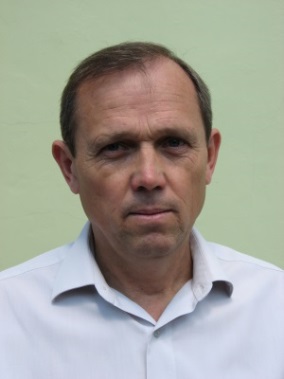ICo-op
Industrial Cooperation and Creative Engineering Education based on Remote Engineering and Virtual Instrumentation
530278-TEMPUS-1-2012-1-DE-TEMPUS-JPHES
Internal Deliverable 3.5
Learning Module: Theory of electric drive
Editor: Mykola Anishchenko
Executive Summary
The course provides students with analytical and practical skills required for the synthesis and computer simulation of the DC motor automatic speed control systems. The course is preparatory for study in the field of various electric drives control systems.
Course objectives
Course objectives – to build students’ theoretical and practical skills on definition of electric DC motors parameters, to study of speed regulation methods and principles of constructing of a system of automatic control systems, to obtain knowledge of synthesis methods of various speed regulators of DC motor control systems.
To acquire these knowledge and skills students should know the structure and operation concept of electric DC motors with independent excitation. Moreover, they should be able to apply knowledge of the theory of automatic control for solving of regulators synthesis problems of speed stabilization systems.
The total scope of the course for postgraduate engineering education constitutes 20 hours: lectures – 10 hours, lab works – 5 hours, individual tasks – 5 hours. The course consists of 5 lectures, 2 laboratory works using the National Instrument educational platform with the DC Motor Control Trainer (DCMCT) board and individual tasks.
Course Content
Theoretical Unit
Theme 1. The concept of electric drive. The equations of motion and structural diagrams of mechanical part of the electric drive
1.1 The concept of electric drive. The diagram of the automated electric drive
1.2 Kinematic diagrams of electric drives
1.3 Computation diagrams of mechanical part of the electric drive
1.4 The equations of motion and structural diagrams of mechanical system
Theme 2. Electromechanic and dynamic properties of the electric DC motors with independent excitation
2.1 The motor connection diagram
2.2 The system of equations and the structural diagram
2.3 Mechanic and electromechanic static and dynamic characteristics
2.4 Methods of the rotational speed control
Theme 3. The electric drive coordinates control. Indicators of control. Typical structural diagrams of electric drives with coordinates control
3.1 Methods for coordinates control
3.2 Key indicators
3.3 The structure with a summing amplifier
3.4 The structure of the independent regulation of the coordinate parallel type
3.5 Structure of independent regulation of coordinates sequential type
Theme 4. The method of sequential correction with a subordered coordinates control
4.1 The principle of sequential correction
4.2 Determination of the transfer function of the controller
4.3 Structural diagram of the multi-loop system of the subordered coordinates control
Theme 5. Electric drive speed control in the open-loop and closed-loop system. Synthesis parameters of speed and current controllers
5.1 Speed control by changing the voltage on the armature
5.2 Automatic speed control on a deviation (with feedback) from the predetermined value
5.3 Single and double-loop speed control systems
Laboratory workshop
Laboratory work 1. Determination of the transfer function of the DC Motor (Procedure: modeling QNET- DC Motor Control Trainer (DCMCT)
Laboratory work 2. Regulation of motor speed in a closed-loop control system (Procedure: speed control QNET-DCMCT)
Practical work (individual tasks): Synthesis of controllers parameters of the closed two-loop speed control system
Lecturer

Mykola Anishchenko
Ph.D, Assoc. Prof. of Automated electromechanical systems Department of National Technical University “Kharkiv Polytechnic Institute”
Expertise:
Numerical control systems, Electric drives of household appliances
e-mail: annikolay@yandex.ru

